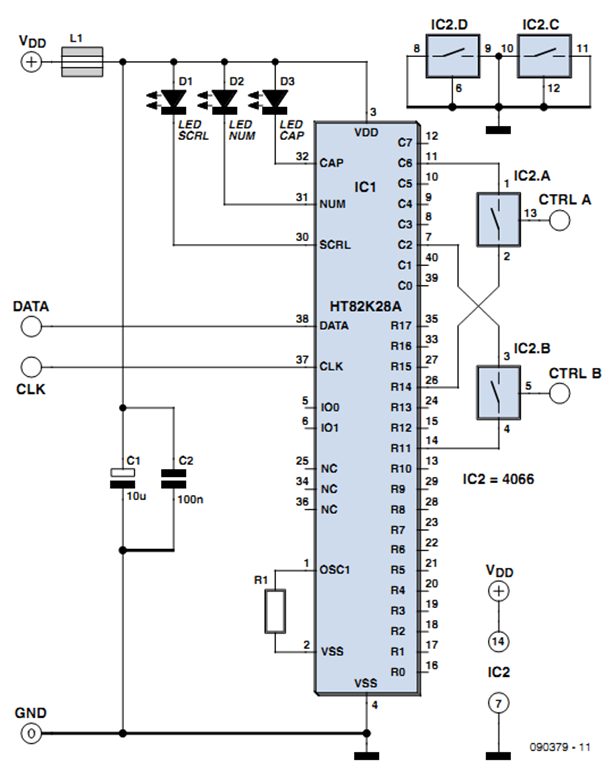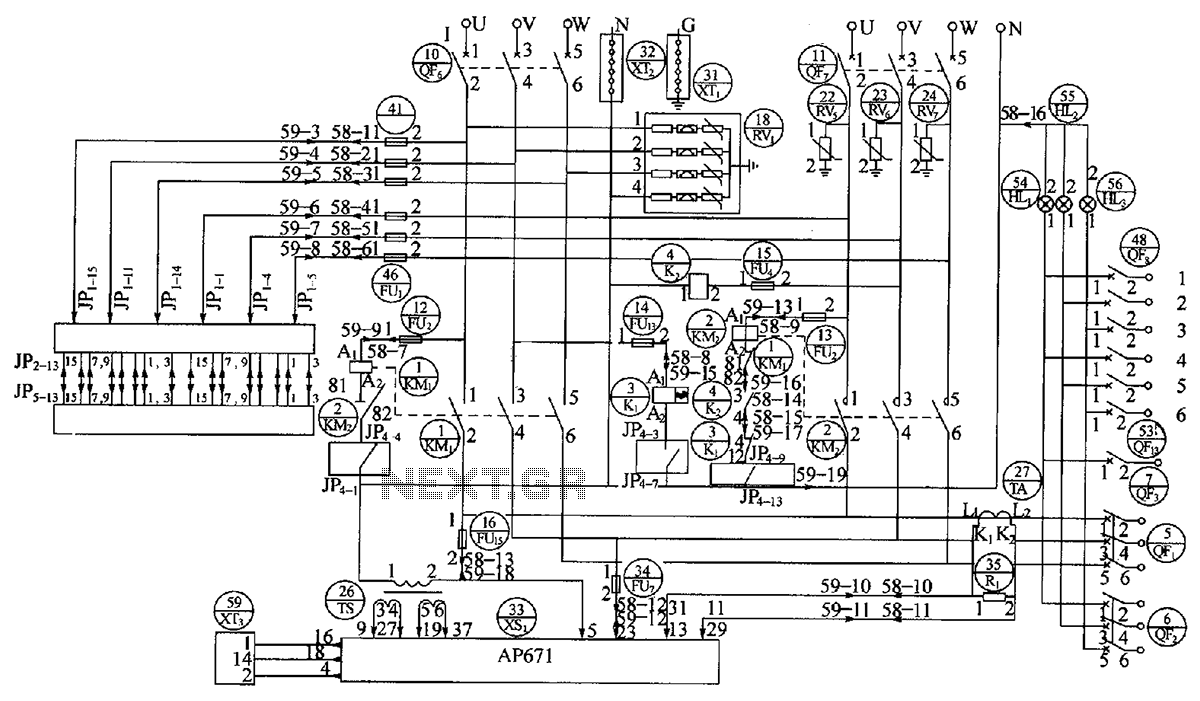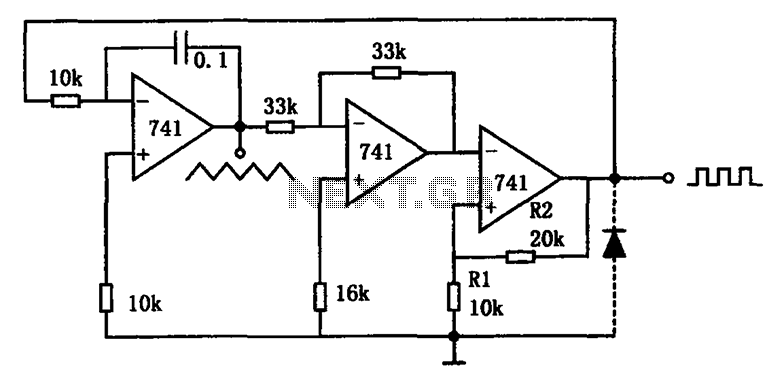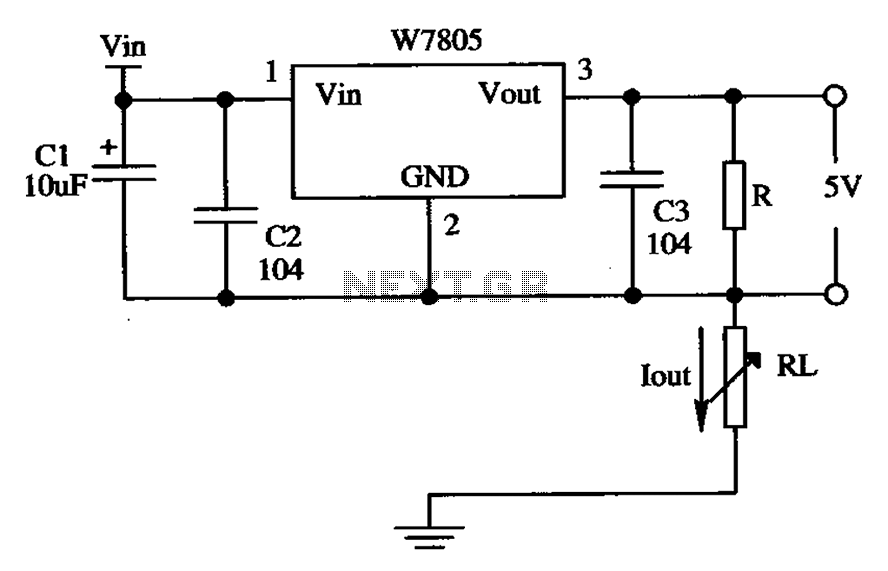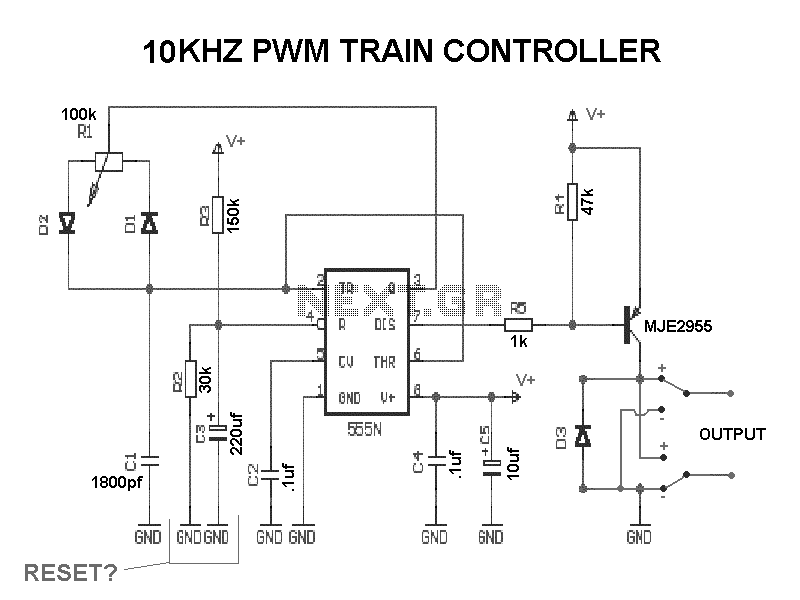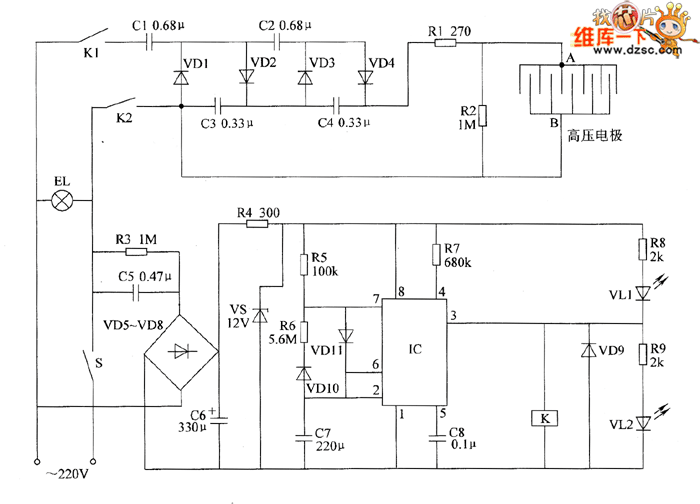
TV as display terminal interface circuit diagram

The interface circuit is placed between the computer's standard video signal output terminal and the television. It amplifies the standard 1V (Peak-to-Peak) video signal to 3V (Peak-to-Peak). The negative feedback circuit consists of transistors T1 and T2, providing a wide frequency response. The amplification time is determined by the ratio of resistors R1 and R2.
The described interface circuit serves as a vital link between a computer's video output and a television display, ensuring compatibility and enhancing signal strength. The circuit's primary function is to amplify the standard video signal from 1V (Peak-to-Peak) to a more robust 3V (Peak-to-Peak), which is often necessary for optimal display performance on larger screens or for longer cable runs.
The negative feedback mechanism, implemented through transistors T1 and T2, plays a crucial role in stabilizing the gain and maintaining linearity across a broad frequency range. This design choice minimizes distortion and ensures that the amplified video signal retains its original quality, which is essential for applications requiring high fidelity, such as video presentations or gaming.
The amplification factor, or gain, of the circuit is adjustable based on the resistor values R1 and R2. By manipulating these resistors, the designer can fine-tune the circuit's response to meet specific requirements. The choice of R1 and R2 directly influences the time constant of the circuit, impacting how quickly the circuit can respond to changes in the input signal, thereby affecting the overall performance and responsiveness of the video output.
Overall, this interface circuit is an effective solution for enhancing video signal strength while preserving quality, making it an essential component in various electronic systems that require reliable video output.The interface circuit is added between computer standard video signal output terminal and TV. It can enlarge standard 1V(Peak - peak) video signal am to 3V(Peak - peak). Negative feedback circuit is composed of T1 and T2. It has a wide frequency range. The enlarge time is decided by the ratio of R1 and R2.. 🔗 External reference
The described interface circuit serves as a vital link between a computer's video output and a television display, ensuring compatibility and enhancing signal strength. The circuit's primary function is to amplify the standard video signal from 1V (Peak-to-Peak) to a more robust 3V (Peak-to-Peak), which is often necessary for optimal display performance on larger screens or for longer cable runs.
The negative feedback mechanism, implemented through transistors T1 and T2, plays a crucial role in stabilizing the gain and maintaining linearity across a broad frequency range. This design choice minimizes distortion and ensures that the amplified video signal retains its original quality, which is essential for applications requiring high fidelity, such as video presentations or gaming.
The amplification factor, or gain, of the circuit is adjustable based on the resistor values R1 and R2. By manipulating these resistors, the designer can fine-tune the circuit's response to meet specific requirements. The choice of R1 and R2 directly influences the time constant of the circuit, impacting how quickly the circuit can respond to changes in the input signal, thereby affecting the overall performance and responsiveness of the video output.
Overall, this interface circuit is an effective solution for enhancing video signal strength while preserving quality, making it an essential component in various electronic systems that require reliable video output.The interface circuit is added between computer standard video signal output terminal and TV. It can enlarge standard 1V(Peak - peak) video signal am to 3V(Peak - peak). Negative feedback circuit is composed of T1 and T2. It has a wide frequency range. The enlarge time is decided by the ratio of R1 and R2.. 🔗 External reference
